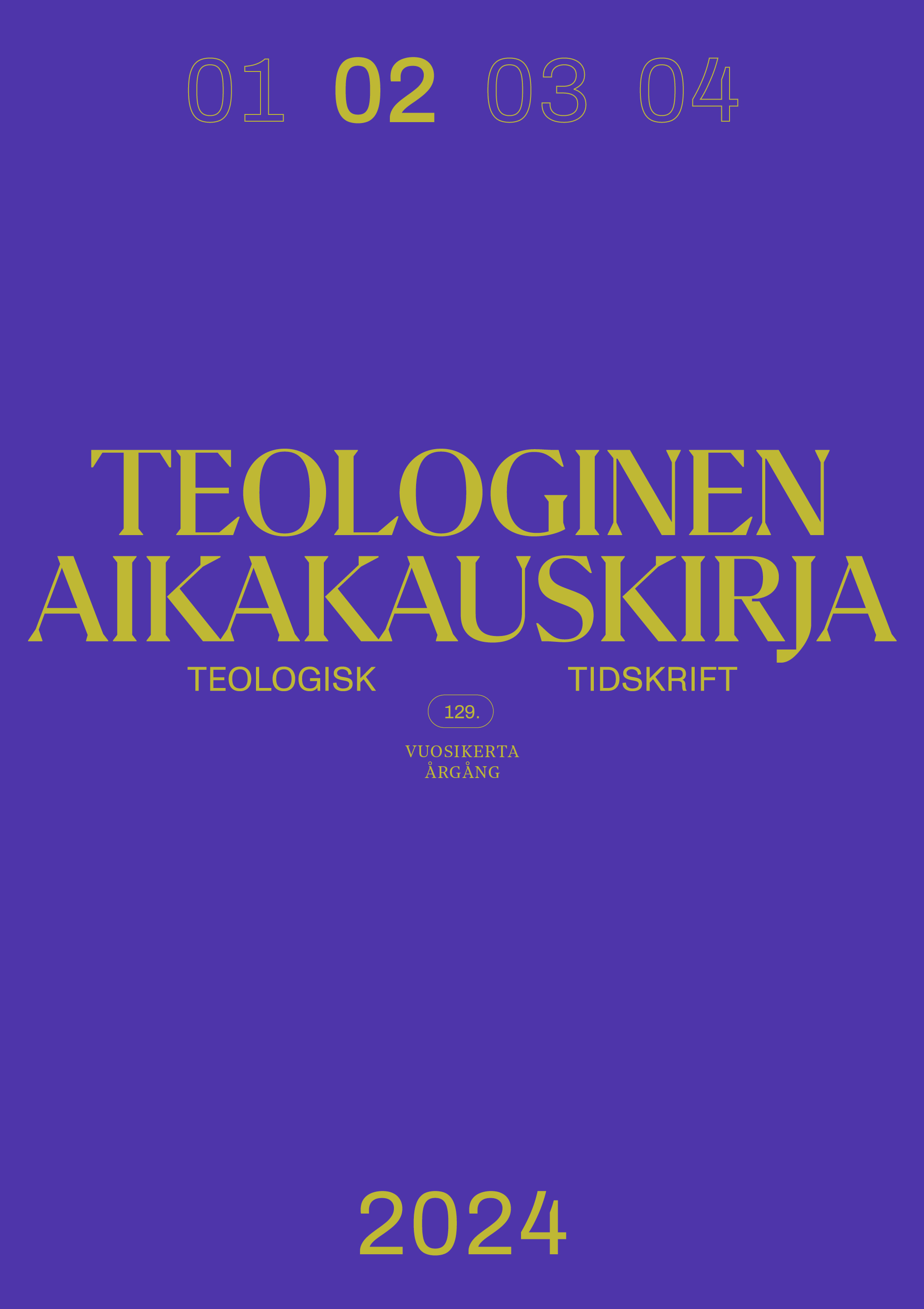From Concrete Action to Abstract Thinking
The Meaning and Use of the Verb käsittää in Biblical Translations
DOI:
https://doi.org/10.62442/ta.144582Keywords:
vanha kirjasuomi, Raamattu, kääntäminen, sanasemantiikka, etymologiaAbstract
This article examines how the Finnish verb käsittää, derived from the word käsi 'hand', has been used in Bible translations from the 16th to the 21st century. The primary research material here consists of the Bible translations of 1776, 1933/1938 and 1992. In the comparative analysis, earlier translations (1548, 1642, 1685) and a few unofficial translations from the 20th to the 21st centuries are also included.
In the Finnish dialects, the verb käsittää has had the concrete meaning 'to get hold of, to catch, to obtain, etc.', but its current meaning is 'to understand, to comprehend'. In the Bible translations from the 16th to the 18th century, the word was used according to its old meanings, but these have completely disappeared from the more recent translations. In addition, the contexts in which the word is used have changed. In some verses, the verb käsittää has been retained in its former contexts, i.e. the verb has been interpreted as meaning to 'understand' in the older translations.
The article also discusses the stages and causes of the change in meaning of the verb käsittää. The development of the verb's abstract meaning corresponds to the development in other European languages (e.g. Swedish begripa and German begreifen 'to catch' > 'to understand', cf. Latin comprehendere). In Finnish, the change has been explained as a semantic loan from Swedish, but it has also been shown to have a strong basis in the Finnish language, thanks to its dialectal uses. The abstractification of the word has taken place in Standard Finnish during the 19th century, when Finnish became a language used in all the cultural domains.



